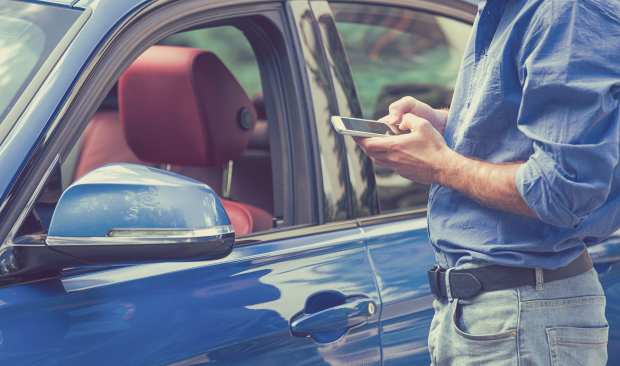Why Digital Driver’s Licenses Are the Future Of ID Verification

Digital driver’s licenses (DDLs) are gaining popularity in the U.S., where 12 states are working to develop and implement them.
Many nongovernmental groups and organizations are working to make them ubiquitous across the country, including the Secure Technology Alliance (STA), a nonprofit industry association dedicated to developing and improving security technologies for a variety of businesses. STA recently embarked on a nationwide initiative to promote DDLs, which it said it believes will improve privacy and security.
“State driver’s licenses are the de facto national ID of the United States, and yet they can only be effectively used for a limited number of face-to-face applications,” said Randy Vanderhoof, the STA’s executive director. “People already trust state-issued identity [cards], so having that state issued identity … be digital, so that it can be used for transactions [that are not done in person], is a huge opportunity in the market.”
PYMNTS recently spoke with Vanderhoof about the advantages of DDLs compared to traditional plastic cards, as well as the challenges that make many states reluctant to issue them.
Privacy, Security and Constant Updates
DDLs offer a range of benefits that their plastic counterparts do not, including improved security and user privacy. Vanderhoof noted that there are many misconceptions about what forms they could take, however.
“It’s important to understand that DDLs are not meant to replace the physical plastic card,” he explained. “It’s a complement to the card that can be used in situations that warrant more security, privacy, safety and a digital audit trail.”
Improved security is one of DDLs’ primary attractions. Traditional plastic cards are vulnerable to theft, whereas mobile phones’ security features protect DDLs. Smartphones’ built-in fingerprint or facial recognition requirements would thwart thieves looking to gain access to digital IDs.
“Nothing new really needs to be invented to do that, but providers like Apple, Google and Samsung are making improvements to their operating systems specifically to support these types of mobile identity credentials,” Vanderhoof said.
Another advantage is privacy. Clerks and workers who check plastic IDs can see all of the details on them, including cardholders’ full names, addresses and even their organ donor statuses. DDLs can be designed so they only display the information necessary, such as birth dates when verifying customers looking to purchase age-restricted items.
“If [users are] in a situation where they’re looking just for age verification, there would be an option to display an age verification message to the reader,” Vanderhoof explained. “Or if [people] need to verify their addresses because they’re [getting] something … shipped, they could present just [their] mailing addresses.”
This privacy is particularly handy when dealing with law enforcement. An individual who has been pulled over could transfer driver’s license information to an officer without having to hand over his or her phone, protecting the driver’s Fourth Amendment rights regarding unlawful search and seizure.
These IDs’ digital natures mean they can be updated quickly and remotely, preventing users from having to visit their local departments of motor vehicles (DMVs) — an often friction-filled experience.
“[Physical] driver’s licenses typically last five years, and that data is static,” Vanderhoof said. “For [those] who got married and change their last names, or moved and got new addresses or whatever, no one knows for sure if that information is still current. People have been known to hold on to their driver’s licenses and use them for benefit programs, even if they’ve moved … someplace else.”
These and many other advantages have made DDLs an attractive option for the 12 U.S. states implementing or developing them. Convincing the other 38 states may require overcoming some of the system’s flaws, however.
50 States Bring 50 Different Challenges
The single biggest challenge facing DDLs’ U.S. implementation is the country’s federated nature, according to Vanderhoof. Each of the 50 states could have a different method of issuing and authenticating DDLs, which would be problematic for those who often travel between states.
“I might be able to rely on my [digital] driver’s license that was issued in the state of Maryland while I’m there,” he said. “But then, if I cross over [into] Virginia and I forget to carry my physical card with me, then I’m suddenly out of compliance.”
This problem exists to some degree for plastic cards, a fact to which anyone who has been denied a drink thanks to an out-of-state driver’s license can attest. A centralized oversight body will be necessary to ensuring each state’s ID verification systems are compatible with all states’ DDLs.
“I think the federal government could have a way to set some of the standards,” Vanderhoof said. “We have organizations like the [National Institute of Standards and Technology] that set standards for other identity and security specifications, and perhaps they could get involved in this to provide some insight and guidance to the states.”
This insight and guidance hasn’t yet materialized, but that has not hindered those states that are working on DDLs. A nationwide solution will likely not become a reality until all 50 can get on board.

